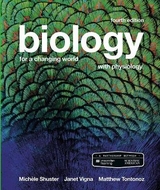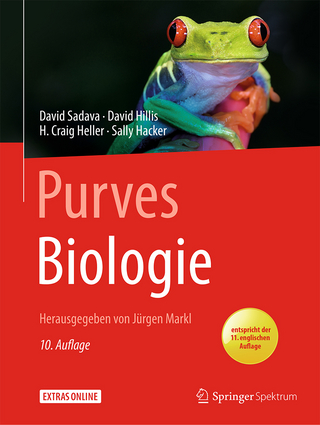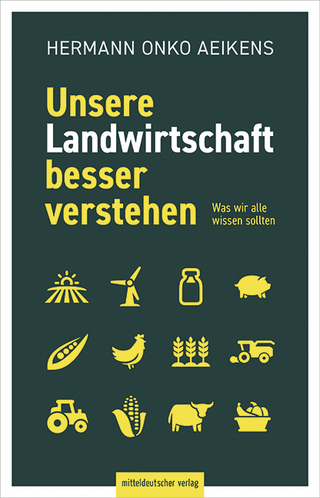
Scientific American Biology for a Changing World with Core Physiology
W.H.Freeman & Co Ltd (Verlag)
978-1-319-05058-0 (ISBN)
This is a one-of-a-kind introduction to the science of biology and its impact on the way we live. Two experienced educators and a science journalist explore the core ideas of biology through chapters written and illustrated in the style of a Scientific American article. Chapters don’t just feature compelling stories of real people—each chapter is a newsworthy story that serves as a context for covering the standard curriculum for the non-majors biology course.
Scientific American Biology for a Changing World is available with LaunchPad. LaunchPad combines an interactive ebook with high-quality multimedia content and ready-made assessment options, including LearningCurve adaptive quizzing. See ‘Instructor Resources’ and ‘Student Resources’ for further information.
Michèle Shuster, Ph.D., is an associate professor in the biology department at New Mexico State University in Las Cruces, New Mexico. She focuses on the scholarship of teaching and learning and teaches introductory biology, microbiology, and cancer biology classes at the undergraduate level, as well as working on several K–12 science education programs. Janet Vigna, Ph.D., is a professor in the biology department at Grand Valley State University in Allendale, Michigan. She is a science education specialist in the Integrated Science Program, training and mentoring K–12 science teachers. Janet has 18 years of undergraduate teaching experience, with a special interest in teaching biology effectively to nonmajors. Matthew Tontonoz is a science writer and independent scholar living in Brooklyn, New York. For ten years, he was a development editor for textbooks in biology before shifting his focus to writing. He is currently senior science writer at Memorial Sloan Kettering Cancer Center, where he covers advances in basic science and clinical cancer research. Gunjan Sinha has been writing about science for over a decade. Her articles have been published in Science, Nature Medicine, Nature Biotechnology, Scientific American, and several other magazines and journals. She holds a graduate degree in molecular genetics from the University of Glasgow, Scotland and a graduate degree in journalism from New York University. She currently works as a freelance science journalist and lives in Berlin, Germany.
UNIT 1 What Is Life Made Of? Chemistry, Cells, Energy.- 1. Process of Science.- 2. Chemistry of Life.- 3. Cell Structure and Function.- 4. Nutrition, Enzymes, Metabolism.- 5. Energy and Photosynthesis.- 6. Dietary Energy and Cellular Respiration.- UNIT 2 How Does Life Reproduce? Cell Division and Inheritance.- 7. DNA Structure and Replication.- 8. Genes to Proteins.- 9. Cell Cycle and Cell Differentiation.- 10. Mutations and Cancer.- 11. Simple Inheritance and Meiosis.- 12. Complex Inheritance.- UNIT 3 How Does Life Change over Time? Evolution and Diversity.- 13. Natural Selection and Adaptation.- 14. Nonadaptive Evolution and Speciation.- 15. Evidence for Evolution.- 16. Life on Earth.- 17. Prokaryotic Diversity.- 18. Eukaryotic Diversity.- 19. Human Evolution.- UNIT 4 How Do Organisms Interact? Ecology.- 20. Population Ecology.- 21. Community Ecology.- 22. Ecosystem Ecology.- 23. Sustainability.- Unit 5 What Makes Plants Unique? Plant Biology.- 24. Plant Growth and Reproduction.- 25. Plant Physiology.- UNIT 6 How Do Animals Work? Physiology.- 26. Overview of Physiology.- 27. Digestive System.- 28. Cardiovascular System.- 29. Respiratory System.- 30. Central Nervous System.- 31. Reproductive System.- 32. Immune System.
| Erscheinungsdatum | 27.03.2018 |
|---|---|
| Zusatzinfo | 820 p. |
| Sprache | englisch |
| Maße | 155 x 235 mm |
| Themenwelt | Naturwissenschaften ► Biologie |
| Schlagworte | Biologie • Biology • Biomedical and Life Sciences • Core Physiology • Life Sciences • Life Sciences, general • Life sciences: general issues • Michele Shuster • undergraduate |
| ISBN-10 | 1-319-05058-1 / 1319050581 |
| ISBN-13 | 978-1-319-05058-0 / 9781319050580 |
| Zustand | Neuware |
| Haben Sie eine Frage zum Produkt? |
aus dem Bereich



